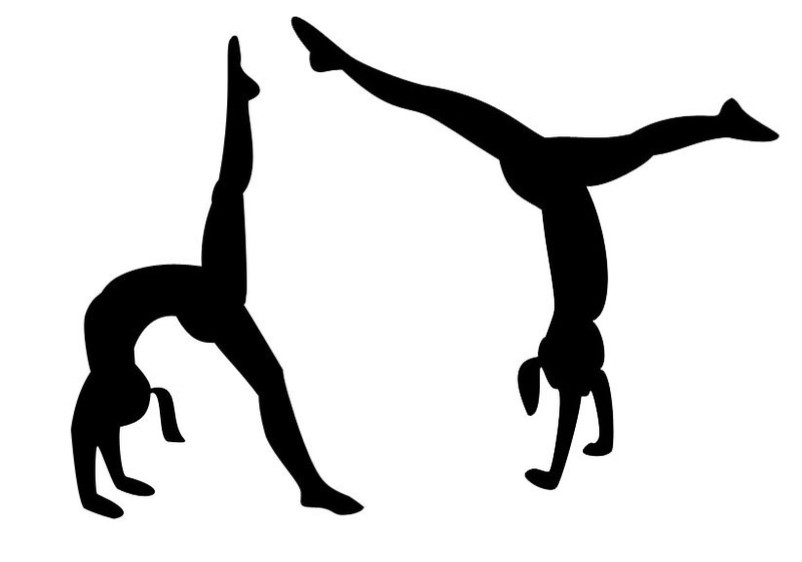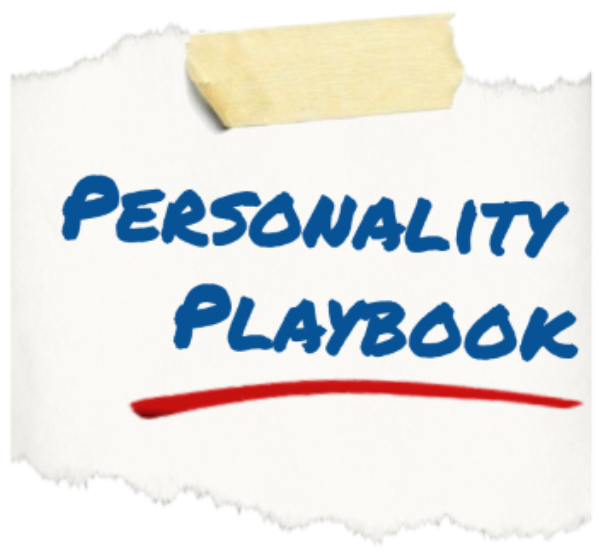
 One of the most popular topics in any discussion about the Myers-Briggs Type Indicator® is relationships. This is no wonder given the number and variety of relationships each individual encounters and navigates throughout life. Some MBTI® relationship discussions revolve around family, while others revolve around friends, bosses, or coworkers, but romance wins the prize when it comes to the most requested type and relationship discussion.
One of the most popular topics in any discussion about the Myers-Briggs Type Indicator® is relationships. This is no wonder given the number and variety of relationships each individual encounters and navigates throughout life. Some MBTI® relationship discussions revolve around family, while others revolve around friends, bosses, or coworkers, but romance wins the prize when it comes to the most requested type and relationship discussion.
While the 16 type descriptions each have a section on individual types in relationships, this article covers each preference in areas that commonly arise in conversations and conflicts in romantic and other relationships. As you read the bullets under each preference, I encourage you to think about if or how each point has factored into your own relationships. I have also included stories, for each set of preferences, to illustrate ways that type differences sometimes play out.
Extraversion and Introversion
| People who prefer Extraversion... | People who prefer Introversion... |
|---|---|
| • Typically enjoy and are energized by attending social engagements where they can interact with people who are known and new and may become drained when spending too much time alone or one on one. | • Typically enjoy and are energized by alone time, one on one interactions, and social engagements with small groups of close friends and may become drained by social engagements, especially frequent, that require interaction with large groups (more than 4 or 5 people) or groups of strangers/acquaintances. |
| • Often want to talk out and/or take action on new ideas and disputes as they arise. | • Often want time to reflect on and process new ideas and disputes before discussing them or taking action. |
| • May want to explore the breadth of the world by exploring lots of new things and be less interested in placing a tremendous amount of time digging deeply into one thing, often resulting in varied and/or changing hobbies and interests. | • May want to explore a few interests in great depth and be less interested in casting a wide net to explore a great many new things, often resulting in fairly steady hobbies and passions that change over long periods of time. |
Sandy, an Introvert, was very upset with her boyfriend, Michael, because he constantly dragged her to crowded clubs full of strangers late at night, when her idea of a good time was to have dinner with a few close friends or to spend a quiet evening alone with each other. On the other hand, Michael, an Extravert, wished Sandy would try to have more fun when they went out to clubs. He felt like she would enjoy herself more if she would mingle, meet new people, and dance like he did, and he didn’t understand why she wanted to stay in all the time when there was socializing to be done and fun to be had.
After arguing over this matter for nearly a year, Sandy and Michael finally stopped blaming each other and started talking about their own ideas of fun and how they felt. Both realized the other was not actually trying to be rude and just had different social needs. They were able to work out a schedule that included some trips to clubs and some quiet nights, and they agreed that it was okay to do their own things, individually at times. This compromise gave them time together and time to meet their needs.
Sensing and Intuition
| People who prefer Sensing... | People who prefer Intuition... |
|---|---|
| • Tend to be oriented to the reality of the here and now and what appears to be most practical in the moment with the verifiable information currently available, and they may see the uncertainty of the future as something too unstable to trust. | • Tend to be oriented to the possibilities for the future and what feels true or right based on instincts and gut hunches, and they may see the here and now as simply the beginning of a ripple effect that may lead in many different directions. |
| • Want to learn the correct way to perform tasks and master them so that they may skillfully duplicate them as needed in the future, and they may complete tasks thoroughly and methodically. | • Want to learn to perform tasks in their own way until they feel comfortable performing them, at which point they prefer to move on to the next task to prevent boredom, and they may complete tasks quickly and to their own level of "good enough". |
| • Generally communicate in a way that is chronological, detail oriented, thorough and practically relevant, and they appreciate information that is either delivered in a similar fashion or at least linked to that which is meaningful in a concrete way. | • Generally communicate in a way that is big picture focused and jumps around, beginning with what is most important and following what is most important wherever it leads, and they appreciate information that is broad enough to allow individual interpretation, without unnecessary details. |
Sarah, an Intuitive type, was somewhat stressed about deciding whether or not to apply for a promotion, so she talked with her husband. Sarah told her husband, Richard, that the new job sounded like a perfect fit for her, but acknowledged that the move could turn out to be terrible. She also stated that she might miss out on a great benefit that her current employer was looking into, if she decided to apply for the other job. Richard, a Sensing type, responded by pointing out that the possible benefit with the current employer was just that… a possibility. He asked Sarah if she really wanted to make a huge life decision based on something that may or may not happen in the future.
In this case, Sarah and Richard were familiar with their type differences, and Sarah was able to laugh and come out of her stressed state to see that Richard had brought her back to reality with his comment. She was able to put things into perspective and prioritize the possibilities in a way that was more realistic, just as she sometimes helps Richard come out of his detailed reality enough to see what could be.
Thinking and Feeling
| People who prefer Thinking... | People who prefer Feeling... |
|---|---|
| • Place importance on what they believe to be most logical and holding everyone to the same standard when making decisions. | • Place importance on their own personal set of values, what is best in extenuating circumstances, and what fits the needs of others when making decisions. |
| • Typically look at situations to identify problems/areas for improvement first, and they want to set about fixing and improving before identifying positive points of the situation. | • Typically identify the good in situations first and want to praise/celebrate them, and they may be reluctant to bring up problems or negatives, which will likely be discussed in the least hurtful way possible. |
| • While all people have and experience feelings, Thinking types often focus more on what needs to be done than on exploring and expressing feelings, which may cause them to become confused when their proposed solutions to problems are met with annoyance during emotionally based conversations. | • While people generally like to improve situations, Feeling types often focus on preserving harmony and peace over fixing problems, which may cause them to become upset when their own expressions of concern, upset, or injustice are met with attempts to fix problems they simply wanted to verbally get out of their systems. |
Dan, a Feeling type, came home to Chris, a Thinking type, after a downright awful day at the office. Dan proceeded to relay to Chris that his boss had yelled at him for turning his work in late, despite the fact that Dan’s to-do list was already 25 miles long. Dan expressed his concern that his boss hated him and thought he was a terrible employee. Chris responded with helpful suggestions on improving time management skills and discussing the workload with the boss, if that didn’t work. At this point, Dan became very upset with Chris for making the suggestions because he needed to vent, rather than needing to be trained on time management and communication. Chris was very confused, as he was only trying to help Dan fix his problem.
Once the couple calmed down, Dan was able to explain his need to be heard without judgment, and Chris explained his natural inclination to offer solutions to problems when he saw them. The two were able to agree that they could avoid future problems in this area by beginning venting sessions by stating the need to vent and by asking for solutions when they were desired.
Judging and Perceiving
| People who prefer Judging... | People who prefer Perceiving... |
|---|---|
| • Enjoy and crave reaching the finish line of goals and projects, and they will typically complete a task before starting the next | • Enjoy and crave the experience of seeing what life brings and staying open, and they may begin multiple tasks before finishing one. |
| • Often enjoy the process of planning and organizing and believe that it leads to efficiency in most areas of life. | • May find the planning process stressful and undesired, at times, because it limits options and prematurely closes doors that may have been great to walk through. |
| • Tend to become frustrated and frenzied when plans are interrupted or changed after they have been set in motion because a lot of work has been put into implementing them and changes may leave little time for proper execution. | • Tend to live in the moment and enjoy unexpected, happy surprises even when they do not fit with the map or plan that was laid out because these are the events the Perceiver is leaving doors open for by not putting plans in stone. |
Judy was a Judging type who adored planning vacations for she and her boyfriend Ralph. She loved how planning at least 6 months in advance helped them save money and maximize every minute of their vacation time by eliminating any confusion about where they were supposed to be at what time. She knew, with her plan, they were not going to miss a thing they had decided to do in advance. Ralph, a Perceiving type, saw the thoroughness of Judy’s plan, and he felt trapped and disappointed by what his vacation was shaping up to be. He wanted to explore this new city and see what it had to offer, and he was pretty sure he had to be there to get the real story on what it offered. He sadly thought about being rushed by an awesome looking restaurant that wasn’t on the list so that they could go to a tourist attraction that was on the list, and he began to think his vacation would likely feel like work.
A week before they were to take the vacation, Judy noticed that Ralph didn’t seem all that excited about it, and she asked him what was wrong. Ralph told Judy his concerns about the level of structure in the vacation. Judy was surprised to hear that he didn’t share her love of the plan, but she could now see that he appreciated her efforts and simply wanted some free time. Together, they scheduled some unscheduled time, after prioritizing which events they cared most about and which events most needed to be scheduled. This way, the couple had the benefits of planning with some flexibility for exploration.
Navigating Differences
After looking at some differences in preferences, it’s easy to see that type differences can sometimes lead to clarity and sometimes lead to conflict. One of the best pieces of advice for navigating these differences is to talk openly with your partner about how you both function and what you both need. Some of the questions below may help you start some of these conversations.
- How do you process new information, good or bad? Do you like to talk it out or think it out?
- In what situations do you favor following directions, and when do you prefer to figure out your own way?
- When do you look at the big picture, and when do you focus on details?
- What are some occasions where you want to vent versus talk about solutions, and how can we identify the difference?
- What kinds of things do you like to plan, and what do you like to leave more open?
- What really bothers you in communication, and what do you really like?
I hope you have gained some insight into how your references may impact your relationships. If you have stories to tell on this topic, I’d love to hear them in the comments below. If you’d like to read more about relationships and type, check out the 16 type descriptions and Just Your Type: Create the Relationship You’ve Always Wanted Using the Secrets of Personality Type by Paul Tieger and Barbara Barron-Tieger.
Finally, please remember that people of any two types can have successful relationships. Some of the happiest couples I know share 0 preferences! The trick is to understand and respect your differences… and your partner as a person. By respecting each other, you will be more equipped to disagree constructively and build a stronger relationship. I wish you all happy relationships!







Thank you for this. I like the real life examples.
You are welcome! I am glad you enjoyed the article. 🙂
Pingback: Type or Not Type: Relationships – Personality Playbook